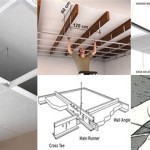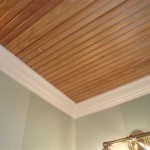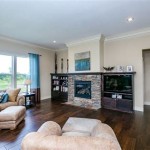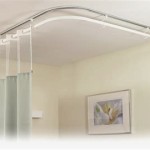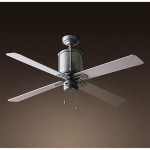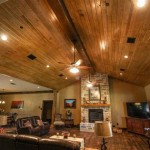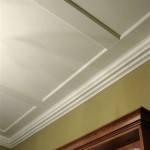The Best Ceiling Light Mounting Plates For Your Homes
Ceiling light mounting plates, often overlooked, are essential components for ensuring the safe and secure installation of various types of ceiling light fixtures. These plates provide a crucial interface between the electrical junction box and the light fixture itself, offering support and stability. Selecting the appropriate mounting plate is vital for a successful and aesthetically pleasing lighting installation. This article examines key factors to consider when choosing ceiling light mounting plates and provides insights into some of the best options available for different home applications.
The primary function of a ceiling light mounting plate is to evenly distribute the weight of the fixture, preventing stress on the junction box and ceiling. A poorly chosen or improperly installed mounting plate can lead to a variety of problems, including sagging fixtures, electrical hazards, and even complete fixture failure. Therefore, understanding the different types of mounting plates and their specific applications is paramount.
Key Point 1: Understanding Different Types of Mounting Plates
The market offers a diverse range of ceiling light mounting plates, each designed to accommodate specific types of fixtures and junction box configurations. Familiarizing oneself with these different types is crucial for selecting the appropriate option for any given lighting installation project.
Crossbars: These are arguably the most common type of mounting plate. Typically made of metal, they feature a crossbar design that spans the junction box. They are versatile and compatible with a wide variety of light fixtures. Adjustable crossbars are particularly useful, as they allow for fine-tuning the position of the fixture relative to the junction box, which is beneficial when dealing with off-center junction boxes or specific aesthetic requirements.
Universal Mounting Plates: As the name suggests, these plates are designed to be compatible with a broad range of junction box sizes and fixture types. They often feature multiple mounting holes and slots, providing flexibility in installation. These plates are often a good choice when dealing with unfamiliar or non-standard junction box configurations. However, it's crucial to verify that the universal plate is adequately rated to support the weight of the intended fixture.
Round Mounting Plates: These plates are specifically designed for use with round junction boxes, which are common in older homes. They typically feature a circular design with pre-drilled holes that align with the mounting points on the junction box. Ensuring the round plate's diameter matches the junction box is critical for a secure and aesthetically pleasing installation.
Pancake Mounting Plates: These are low-profile mounting plates specifically designed for recessed or flush-mounted fixtures. Their slim design allows the fixture to sit close to the ceiling, minimizing protrusion. They are commonly used with recessed lighting cans or other fixtures where a minimalist aesthetic is desired.
Swivel Mounting Plates: These plates utilize a swivel mechanism, allowing the fixture to be angled or pivoted after installation. This is particularly useful for directional lighting or for adjusting the angle of the light output. However, swivel plates typically have a lower weight capacity than fixed plates, so careful consideration of the fixture's weight is necessary.
Specialty Mounting Plates: These plates are designed for specific types of fixtures, such as chandeliers or heavy pendant lights. They are often reinforced and feature specialized mounting hardware to ensure the fixture's safe and secure installation. These plates can often be customized, especially if the weight being supported is unusually high.
Key Point 2: Material, Weight Capacity, and Installation Considerations
Beyond the type of mounting plate, several other factors influence the optimal choice for a lighting project. These include the material used in the plate's construction, its weight capacity, and the ease of installation.
Material: Mounting plates are typically constructed from metal, such as steel or aluminum. Steel plates offer superior strength and durability, making them suitable for heavier fixtures. Aluminum plates are lighter and corrosion-resistant, making them a good choice for damp environments or lighter fixtures. The choice of material should reflect the fixture's environmental exposure, as well as its weight.
Weight Capacity: This is a critical factor. The mounting plate must be rated to support the weight of the light fixture. Exceeding the weight capacity can lead to the plate bending, breaking, or detaching from the junction box, posing a safety hazard. Always consult the manufacturer's specifications for both the mounting plate and the light fixture to ensure compatibility and adherence to safety standards. Overestimating the weight to add a factor of safety is always a good practice.
Installation Considerations: The ease of installation is another important factor, particularly for DIY projects. Mounting plates with clear instructions and readily accessible mounting holes are generally easier to install. Adjustable mounting plates can simplify alignment and leveling, especially when dealing with imperfect ceiling surfaces or off-center junction boxes. Ensure the tools required for installation are readily available before beginning the project.
Junction Box Compatibility: The mounting plate must be compatible with the existing junction box. This includes matching the size and shape of the plate to the box, as well as ensuring the mounting holes align correctly. In some cases, it may be necessary to replace the existing junction box with one that is compatible with the desired mounting plate and light fixture. Always ensure the junction box is securely attached to a structural member of the ceiling.
Finishes and Aesthetics: While the primary function of a mounting plate is structural support, its appearance can also contribute to the overall aesthetic of the lighting installation. Mounting plates are available in various finishes, such as white, black, brushed nickel, and bronze. Choosing a finish that complements the light fixture can enhance the overall design. In some cases, the mounting plate is largely hidden by the fixture itself, making this less of a concern.
UL Listing and Safety Standards: When selecting a mounting plate, it's essential to choose one that is UL listed or certified by another reputable testing agency. This indicates that the plate has been tested and meets established safety standards. Using a non-certified mounting plate can pose a significant safety risk, as it may not be adequately designed or constructed to support the weight of the fixture.
Key Point 3: Specific Mounting Plate Options and Their Applications
Given the various types and considerations discussed above, examining specific mounting plate options and their suitability for different applications is beneficial. This provides practical insights into selecting the optimal mounting plate for common lighting projects.
For Chandeliers: Chandeliers, often heavy and ornate, require specialized mounting plates designed to withstand significant weight. These plates typically feature reinforced construction and multiple mounting points to distribute the weight evenly. They often include safety cables or chains to provide additional support in case of mounting failure. Look for plates specifically rated for chandelier use and that have been certified for the chandelier’s weight.
For Ceiling Fans: Ceiling fan mounting plates need to be exceptionally strong, as they must support the weight of the fan while also withstanding the dynamic forces generated by its rotating blades. These plates are typically reinforced and designed for direct attachment to ceiling joists. Using a standard mounting plate for a ceiling fan is highly discouraged due to safety concerns.
For Recessed Lighting: Recessed lighting fixtures often use pancake mounting plates or specialized clips that attach directly to the ceiling joists. The choice of mounting method depends on the type of recessed fixture and the construction of the ceiling. Ensure that the mounting method is compatible with both the fixture and the ceiling material.
For Track Lighting: Track lighting systems typically utilize a mounting canopy that attaches to the junction box. The track is then mounted to the canopy, allowing for flexible positioning of the individual light fixtures. The mounting canopy must be securely attached to the junction box and capable of supporting the weight of the entire track system.
For Flush Mount Fixtures: Flush mount fixtures often use a simple crossbar or universal mounting plate that allows the fixture to sit close to the ceiling. The mounting plate should provide a stable and level surface for the fixture to attach to, ensuring a clean and professional installation. Ensuring the fixture is flush and level is critical for visual appeal.
For Pendant Lights: Pendant lights can use a variety of mounting plates, depending on their weight and style. Lighter pendant lights may use a standard crossbar or universal mounting plate, while heavier pendant lights may require a reinforced plate. The mounting plate should be compatible with the pendant light's canopy or baseplate mechanism.
Ultimately, selecting the best ceiling light mounting plate involves a careful assessment of the light fixture's weight, type, and intended application, as well as the existing junction box configuration and ceiling construction. By considering these factors and choosing a mounting plate that meets established safety standards, one can ensure a safe, secure, and aesthetically pleasing lighting installation.

How To Install A Lighting Fixture Forbes Home

Types Of Kitchen Lighting For Your Home Forbes

Project Source 1 Light 7 4 In Matte White Led Flush Mount 2 Pack The Lighting Department At Com

Best 25 Exposed Beam Ceiling Lighting Ideas Lightopia

The Best Led Strip Lighting Ideas S For Your Space Jd

45 Best Kitchen Lighting Design Ideas For Farmhouse Charm

Kitchen Lighting The Home Depot

40 Beach House Decor Ideas Coastal Decorations For Your Home

15 Clever Lighting Ideas For Low Ceilings 2024 Our Picks

How To Change A Light Fixture House Of Hipsters
Related Posts

